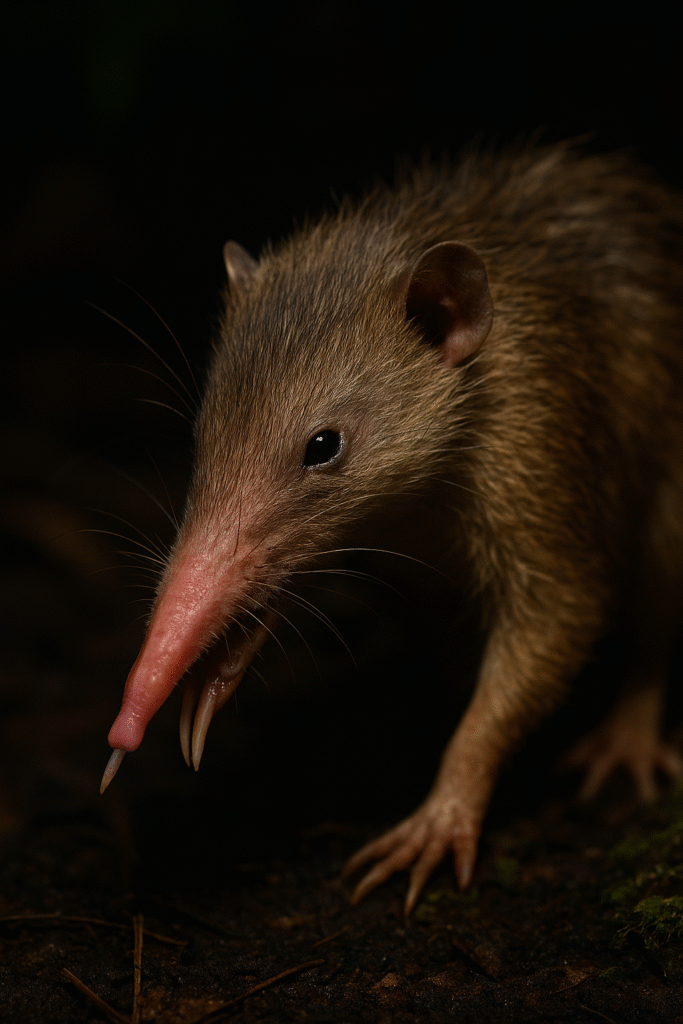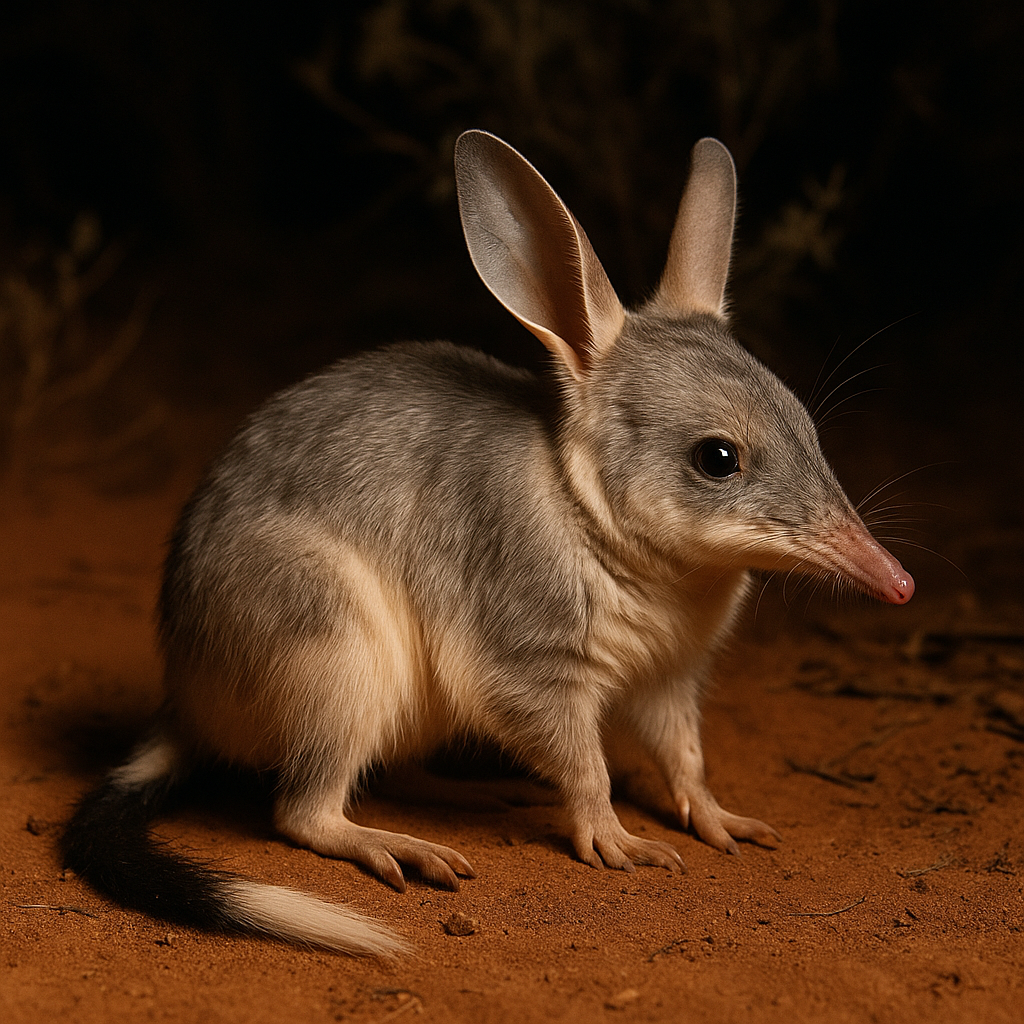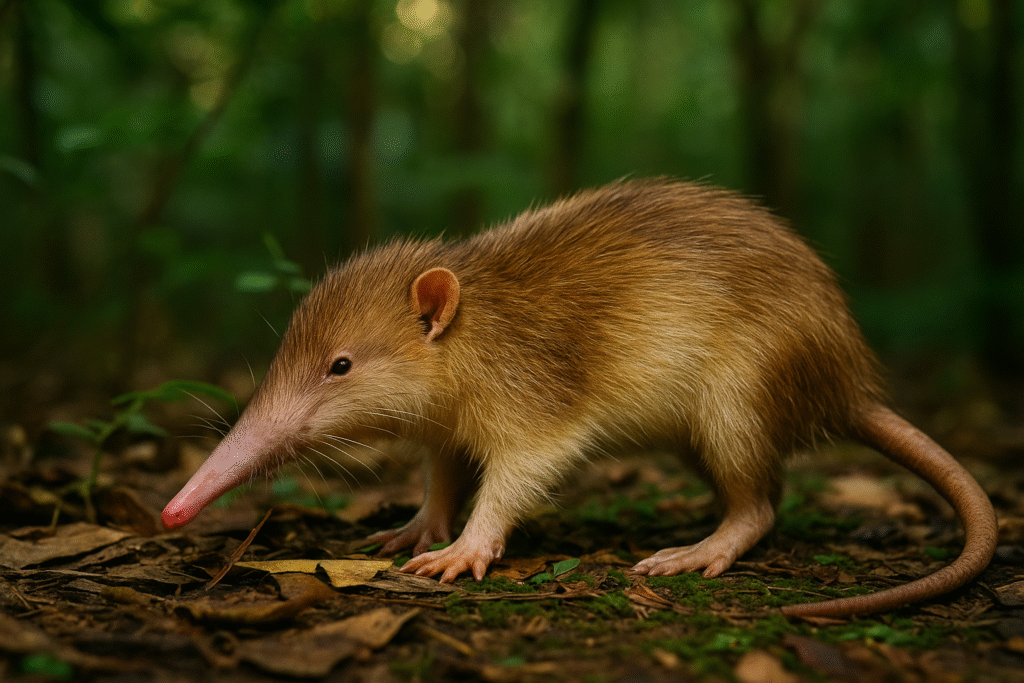In the dim forests of Hispaniola, under moonlight that filters through tangled canopy, moves one of evolution’s strangest survivors—a creature so rare and ancient that it seems misplaced in time. The Solenodon, a venomous, nocturnal mammal, is a living relic of a world that has all but disappeared. Few have seen it in the wild, and fewer still understand its strange story.

A Survivor of Deep Time
The Solenodon looks almost unassuming—something between a shrew and a rat, with a long snout, coarse fur, and clawed feet. Yet, hidden within this modest frame lies a lineage that stretches back more than 70 million years, when dinosaurs still ruled the Earth. It is among the last of a once-widespread family of mammals that thrived before modern carnivores appeared. Today, it survives only on two Caribbean islands—Cuba and Hispaniola—making it one of the rarest mammals alive.
Venom in the Bite
Unlike nearly all other mammals, the Solenodon possesses a venomous bite. Grooves run down its lower incisors, carrying toxic saliva that can immobilize prey. This adaptation, ancient and rare, allows the Solenodon to subdue insects, worms, and even small vertebrates in the dead of night. Scientists believe this makes it one of the very few venomous mammals in existence—a reminder of just how unusual its biology truly is.
A Ghost of the Forest Floor
The Solenodon is almost entirely nocturnal. It moves with a jerky, unpredictable gait, snuffling among leaves and roots for hidden prey. Its elongated snout bends and twitches like a delicate probe, a perfect tool for navigating the undergrowth. To encounter one in the wild is to witness something that feels half-real, half-legend—a small ghost wandering the forest floor, unseen by most who share its island.

Threats and Fragility
Once widespread, the Solenodon’s survival is now precarious. Introduced predators like dogs, cats, and mongooses have devastated populations. Habitat destruction and hunting have further pushed the species to the edge. For decades, it was even thought extinct—until rediscovered in the 20th century. Today, conservation efforts are under way, but its existence remains fragile, its survival hanging on the delicate balance of shrinking habitats and human willpower.
Myth, Mystery, and Meaning
To the people of the Caribbean, the Solenodon has long carried an aura of mystery. Some folklore describes it as a trickster spirit of the night, an omen of encounters with the unknown. To modern science, it is a living key to the past, a reminder that not all of Earth’s ancient experiments vanished with the dinosaurs. It is an animal that forces us to confront how much of nature’s story still lies hidden in the shadows.

The Solenodon is not majestic like a lion or immense like a whale. It is stranger, subtler—a survivor cloaked in obscurity. But in its obscurity lies its truth: not all wonders are loud, and not all survivors are celebrated. Some endure simply by being unseen.


Reply